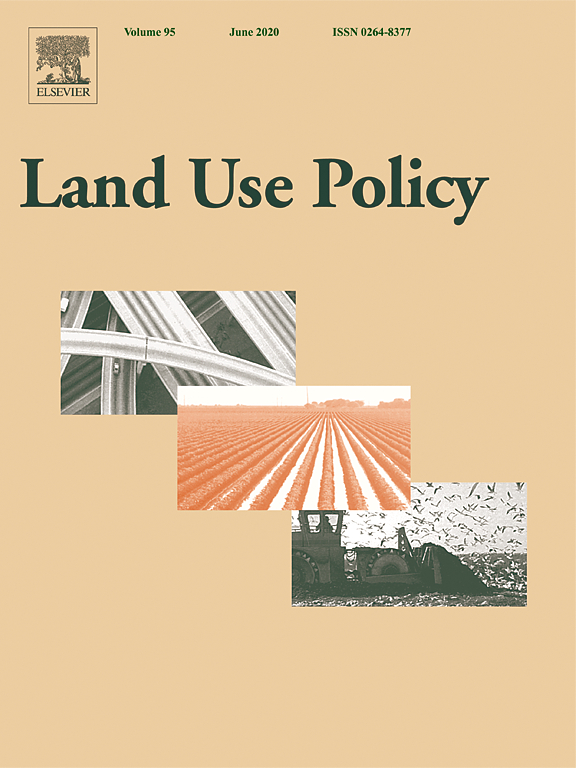Location
Land Use Policy is an international and interdisciplinary journal concerned with the social, economic, political, legal, physical and planning aspects of urban and rural land use. It provides a forum for the exchange of ideas and information from the diverse range of disciplines and interest groups which must be combined to formulate effective land use policies. The journal examines issues in geography, agriculture, forestry, irrigation, environmental conservation, housing, urban development and transport in both developed and developing countries through major refereed articles and shorter viewpoint pieces.
Land Use Policy aims to provide policy guidance to governments and planners and it is also a valuable teaching resource.
ISSN: 0264-8377
Members:
Resources
Displaying 86 - 90 of 279Power and perception – From paradigms of specialist disciplines and opinions of expert groups to an acceptance for the planning of onshore windfarms in England – Making a case for Social Impact Assessment (SIA)
Starting point for the research underlying this paper was the question why there were low rates of planning approval for Community Energy (CE) onshore windfarms in England, despite an overall supportive policy position. In order to get an indication for possible reasons, results of an in-depth review of one community driven project are provided; the Valley Wind Cooperative (VWC) in Kirklees, West Yorkshire. Importantly, a disconnect between policy and practice is observed. Views and associated perceptions of experts of certain disciplines, including e.g.
The economic value of tourism and recreation across a large protected area network
Environmental economists routinely use travel cost methods to value recreational services from protected areas, but a number of limitations remain. First, most travel cost studies focus on a single protected area or a small handful of protected area sites; value estimates that relate to a protected area network across a larger geographic area or jurisdiction are rare. Second, most protected area travel cost studies use on-site sampling techniques that bias value estimates towards those reported by frequent visitors.
Regrowing forests contribution to law compliance and carbon storage in private properties of the Brazilian Amazon
The viability of the climate pledges made by Brazil at the COP21 in Paris, 2015, heavily depends on the success of the country policies related to forest governance. Particularly, there are high expectations that the enforcement of the Brazilian Forest Code (BFC) will drive large-scale forest recovery and carbon mitigation. In this study, we quantified the potential role that ongoing forest regeneration may play in offsetting deficits from private properties with less vegetation cover than determined by the BFC, considering different law implementation settings.
The impact of smallholder farmers’ participation in avocado export markets on the labor market, farm yields, sales prices, and incomes in Kenya
Smallholder producers in sub-Saharan Africa are often unable integrate into markets and access high-value opportunities by effectively participating in global chains for high-value fresh produce. Using data from a survey of large avocado farmers in Kenya, this study examines the determinants and impacts of smallholder-producer participation in avocado export markets on labor inputs, farm yields, sales prices, and incomes, using a switching regression framework to control for selection effects.
Land use optimization tool for sustainable intensification of high-latitude agricultural systems
Recent studies assessing agricultural policies, including the EU’s Agri-Environment Scheme, have shown that these have been successful in attaining some environmental goals. In Finland, however, the economic situation of farms has dramatically fallen and hence, the actions do not result in social acceptability. Sustainable intensification is a means to combine the three dimensions of sustainability: environmental, economic and social. Here we introduce a novel land use optimization and planning tool for the sustainable intensification of high-latitude agricultural systems.



